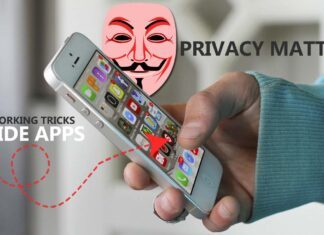Some of the latest technological gadgets available today are often more like toys for us to play with than tools to make our life easier and more manageable. A trip to a Vegas casino is certainly fun but will not necessarily change your life. Also, asking a smart speaker to activate the lights can be really fun but also not exactly life-changing. But there are many new technologies that can be really life-changing for older people by making it easy to monitor their health and to maintain social contacts and thereby maintain an independent life.
Caregivers and family members are often hesitant to introduce these new technologies to seniors on the assumption that they will not be able to adapt to them or will not wish to use them. This is often not the case. According to Dr Michael Wasserman, a geriatrician and the CEO of Rockport Healthcare Services which offers clinical and professional support for nursing homes, “Older adults can easily embrace a lot of tech resources.” The important thing is to find the right ones. Smartphones, for example, have excellent accessibility features and there are other devices specifically designed for seniors that can help to manage physical and social difficulties.
Many experts do say that some of these gadgets, specifically designed with the older adult in mind, do not deliver on their promises.
The following are the ones to look for if you are interested in finding technological devices that will assist you, your family members and your friends.
Mainstream technology
The best place to start would be to look for those devices that are pretty mainstream, rather than specially designed gadgets. They are likely to be more standardized, less expensive and can be found easily. A smartphone is a good example. There are some phones, for instance, the Jitterbug, that are particularly aimed at the older adult. However, iPhones and Android devices have a whole range of very useful accessibility features and have very high- quality screens which is an important feature. It is not necessary to buy the most expensive model and you can often find older models at good discounts.
On an iPhone there are many different options that are useful for the older user. In Settings, go to General and then Accessibility and you will find a built- in magnifier for use with the camera. It is possible to limit the animations that play when opening and closing apps and to develop the screen contrast or change the size of the type so that reading is made easier.
On the Android phones similar features can be found. There is a Talkback feature that enables the device to speak “user-interface commands”. This can be accessed by going into Settings and then Advanced Accessibility.
There are other very useful features like adjusting the size of icons or the screen brightness. It is also possible to create lists of contacts for relatives and medical caregivers.
Other useful technology such as Fitbit that can check activity levels and voice activated smart speakers like an Amazon Echo that do home automation. There are also gadgets for the car that have excellent safety features like warnings for lane-departure or electronic trackers that can locate your keys. However, according to Wasserman, the most important advantage of all these new technologies is that they may help in limiting the feelings of isolation that older people often feel. “One of the most important things is socialization. There’s nothing like Face-Timing with your grandson.”
Concentrate on what’s useful
There are so many new technologies out there, how do you know which ones you should focus on? Many of them have been designed with the older adult in mind.
According to Nancy Avitabile, the board president of Aging Life Care Association – geriatric care managers, “It is difficult to know what’s going to be the most viable”. However, the main question to ask is “Will this enhance the user’s quality of life?” And according to Wasserman, those technologies specifically designed for older adults that focus on a particular task are usually the most useful ones. They tend to be practical gadgets like a smart blood pressure cuff that can send readings directly to the medical practitioner rather than the senior having to continually keep track of the numbers.
There are, at the other end of the spectrum, devices that are less specific in what they hope to offer like the robotic puppy which is marketed “keep grandma company.” Some ideas are better than others and a good idea will not necessarily transform itself into a good device or gadget. According to Bruce Leff, director of the Center for Transformative Geriatric Research at Johns Hopkins University “A lot of design for older adults hasn’t been all that good. They don’t understand the needs of adults with physical impairment or cognitive impairment.”
It is useful to look at the history and track record of a company making devices for seniors. For instance, ADT and Philips, both known for their emergency response system devices. However, it is important to really look at the device’s specific features and carefully look at whether this gadget will be useful for the particular person you have in mind. Wasserman goes on to say “We talk a lot about delivering ‘person centered’ care. We need to understand that everyone is an individual and one size does not always fit all. You need to be willing to try things and see how the individual responds.” Also, it is important to be aware that a senior’s condition over time may change and the device may become less useful.
Sometimes low-tech solutions may be the answer. An example of this would be a regular GPS tracking device that can be very helpful for a senior with memory loss. However, they do need to remember to keep them charged and to have it with them. These low- tech devices may need to be supplemented with, say, a “safe support bracelet” with the person’s name, address and telephone number.
The question of Privacy
Along with all the obvious benefits of technology there is the question of privacy to consider. Using all these devices to monitor the safety of older adults does bring up the question of safeguarding the privacy of seniors and how to go about that. According to Avitabile, older people’s expectations about sharing personal information and privacy are very different from those of their children or grandchildren’s.
For instance, security cameras that can monitor seniors and check on them constantly are not necessarily something that seniors understand. They may well not understand that they are being continuously watched.


